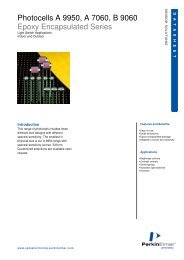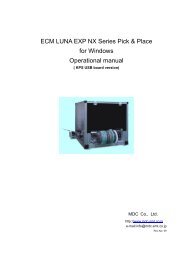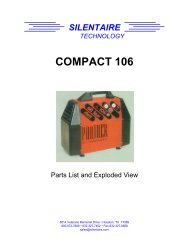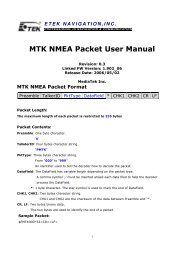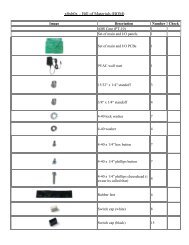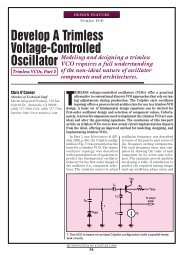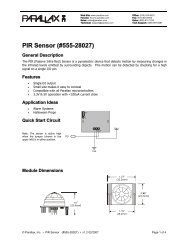Microstrip Patch Antennas for Broadband Indoor Wireless Systems ...
Microstrip Patch Antennas for Broadband Indoor Wireless Systems ...
Microstrip Patch Antennas for Broadband Indoor Wireless Systems ...
Create successful ePaper yourself
Turn your PDF publications into a flip-book with our unique Google optimized e-Paper software.
7.0 PHASE III<br />
7.1 AREA COVERAGE MEASUREMENTS<br />
Instead of using an anechoic chamber to estimate the radiation pattern using the<br />
electric and magnetic field, the decision was made to use Alex Wong’s testing apparatus.<br />
The testing equipment calculates the path of loss of each of the antennas at different spots<br />
of a room. High frequency signal generators were used to feed the antennas. And using<br />
radio receiver and a balun based stepper motor driven antenna, 360 samples of path loss<br />
are taken <strong>for</strong> the three resonating antennas. The average path loss of the 360 samples is<br />
taken to be the path loss of the antenna at a given spot in the room. The two broadband<br />
antennas were tested along with the commercial antenna, and the results were compared<br />
to benchmark the in-house antennas.<br />
Three resonating frequencies were chosen, 100 KHz apart, <strong>for</strong> the three antennas.<br />
However the return losses of the antennas are not constant and they are very dissimilar.<br />
We had to be careful not to pick a frequency that returned a very high return loss <strong>for</strong> one<br />
antenna but comparatively poor return loss <strong>for</strong> the other two. As a result, to reduce bias,<br />
three frequencies were chosen that provided almost identical return losses <strong>for</strong> all three<br />
antennas, as shown in fig 22.<br />
Triangular Rectangular Commercial<br />
Frequency<br />
(MHz)<br />
Return<br />
2458 2459 2460<br />
Loss (dB) -13 -13.5 -14<br />
Fig 22 Table of frequency used <strong>for</strong> each antenna<br />
For the measurements to be correct, all the losses needed to be accounted <strong>for</strong> and<br />
entered in the software <strong>for</strong> reliable results. The individual feeder losses were calculated,<br />
and also the actual power at the antenna end from the signal generators. They were both<br />
calculated using the test receiver and a step attenuator. In order to per<strong>for</strong>m tests that were<br />
truly representative and emulate a typical office situation, the radio lab (R4) was chosen.<br />
11 spots were chosen, that approximately covered the perimeter of the room. Obviously<br />
further testing is required but due to time constriction, the decision was made to restrict<br />
testing to one room only.<br />
As shown in fig 23, in terms field per<strong>for</strong>mance the commercial antenna outper<strong>for</strong>ms<br />
the in-house antennas. It is also evident that, in most cases the rectangular<br />
antenna per<strong>for</strong>ms better than the triangular antenna. The overall maximum difference<br />
between the commercial and the in-house antennas is approximately 10 dB.<br />
Further schematics of the room and exact testing spots and path loss results are provided<br />
in the Appendix-C.<br />
Possible causes <strong>for</strong> the in-house antennas <strong>for</strong> under-per<strong>for</strong>ming can be put down to the<br />
substrate anomalies at high frequency and a comparatively poor input impedance match.<br />
21




